The perfect recipe, just in time for Thanksgiving!
Every year, Americans consume more turkey on Thanksgiving than they do on Christmas and Easter combined. Despite the bird’s popularity, not everyone who enjoys turkey knows how to properly cook one. Luckily, MEATER takes all of the guesswork out of estimating cook times, making turkey preparation an absolute breeze.
If you’re an inexperienced turkey cook, or just looking to brush up on your technique, here’s our recipe for a traditional oven roast turkey:
Preparing for your roast
Our goal is to reach an internal temperature of 165ºF for the breast and 175°F for the thigh. We are cooking the thigh to a higher target temperature to allow the connective tissue to soften, making the dark meat more tender.
Because we have two different target temperatures, it’s a good idea to use two MEATERs to monitor them in tandem.
If you’re only cooking with one MEATER, we recommend inserting your probe into the bird’s breast. Since the breast is larger than the thigh, you’ll increase your chances of proper MEATER placement and accurate readings.
Here are a few tips that will help to ensure your bird is cooked evenly:
- Ice the breast: If you place a bag of ice on the breast prior to roasting, when you start your cook, the thigh will have a higher starting temperature and will therefore end higher as well.
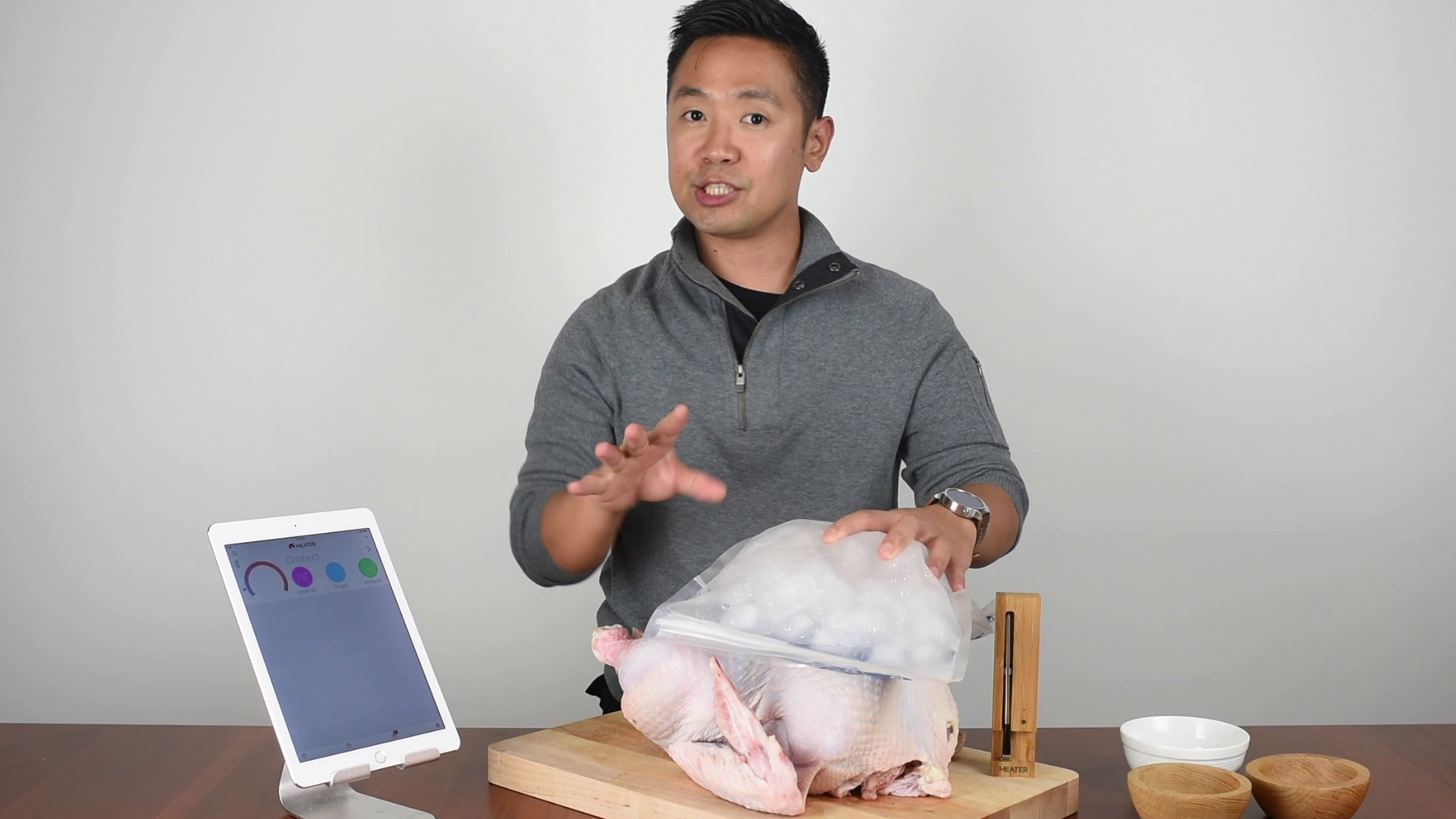
- Don’t truss the legs: If you leave your bird’s legs untied, the dark meat will be more directly exposed to heat, and will therefore cook faster.
- Wrap breast in foil: If you don’t have time to ice the breast, you can wrap the top of your turkey in tin foil to help shield the white meat from heat. Just make sure to remove the foil approximately 45-60 minutes before you cook ends, so that your turkey skin can brown. Tip: Set a custom alert in the MEATER app to remind you to remove the foil.
Instructions
You can pre-heat your oven now if you’re ready to starting cooking. For this cook, we pre-heated our oven to 325°F.
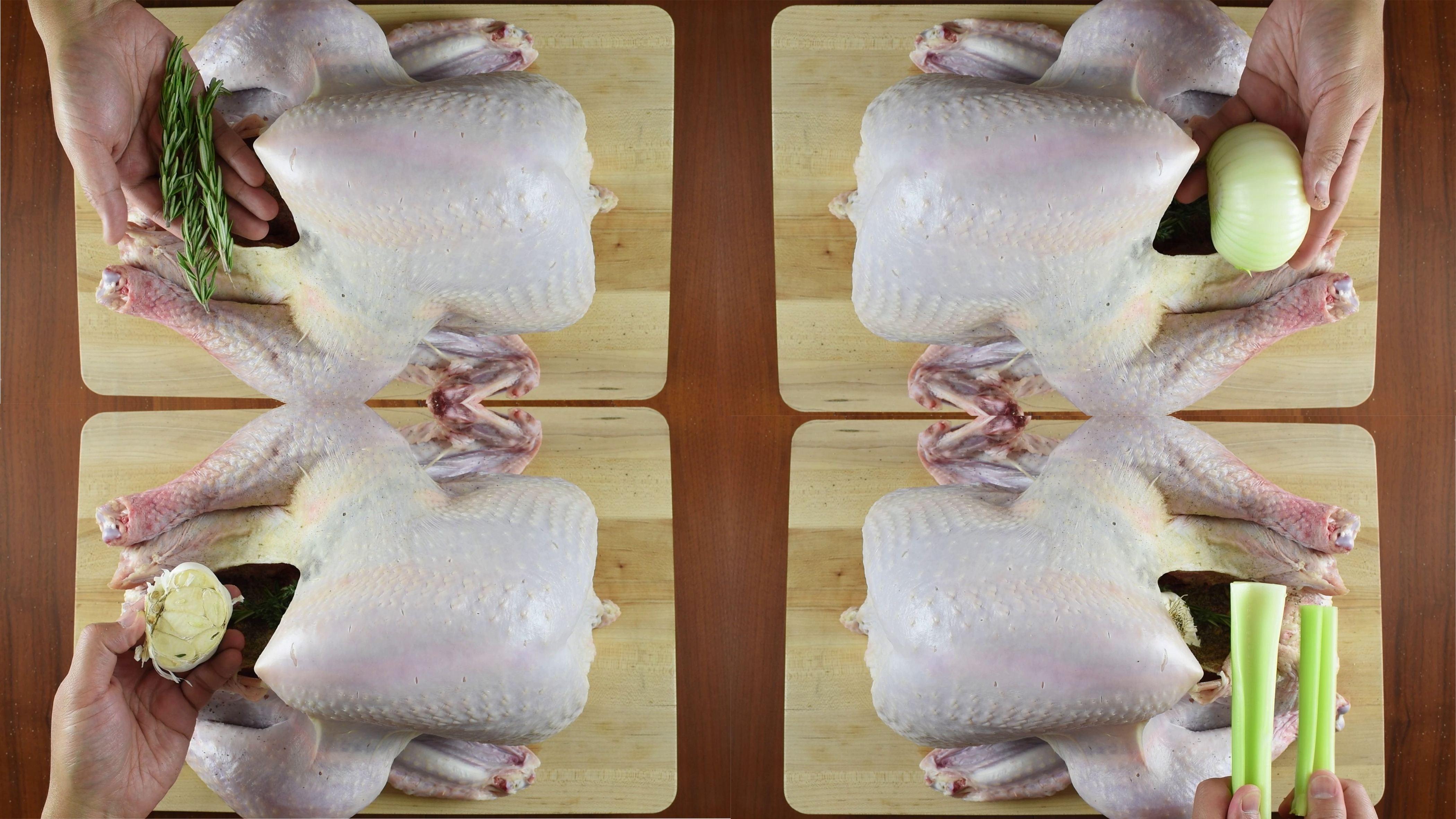
1. Remove the giblets from the bird’s cavity, then fill the inside with aromatics. For our cook, we used the following aromatics:
- Fresh Rosemary
- Fresh Thyme
- Half an onion
- Half a head of garlic
- Fresh celery
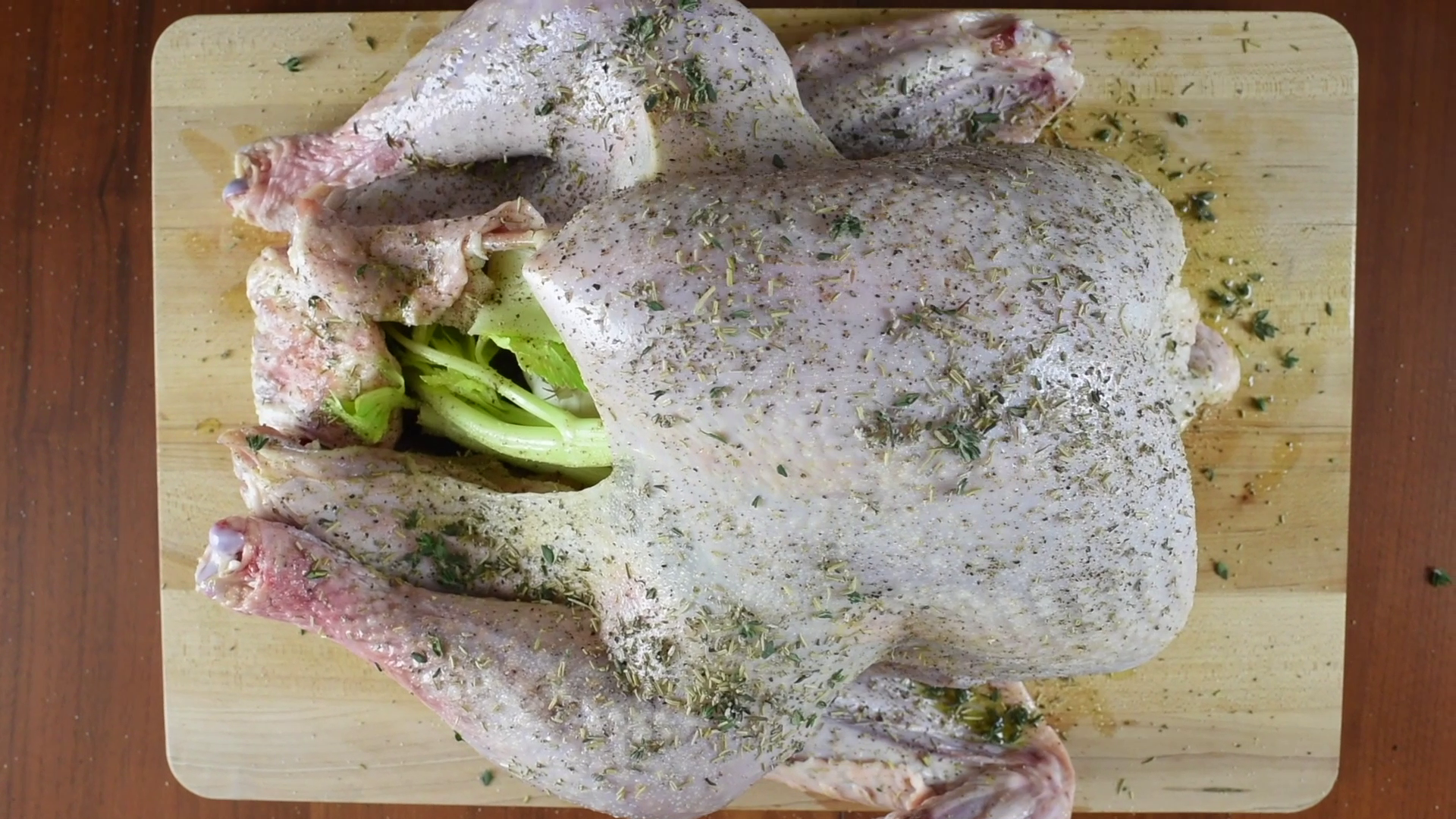
2. Coat your bird in oil to produce a golden, crispy skin. Apply a healthy amount of your favorite seasoning. We used:
- Dried thyme
- Dried sage
- Dried rosemary
- Olive oil
- Salt + pepper
Tip: Dry your bird off with a paper towel prior to seasoning. This will produce crispier skin.
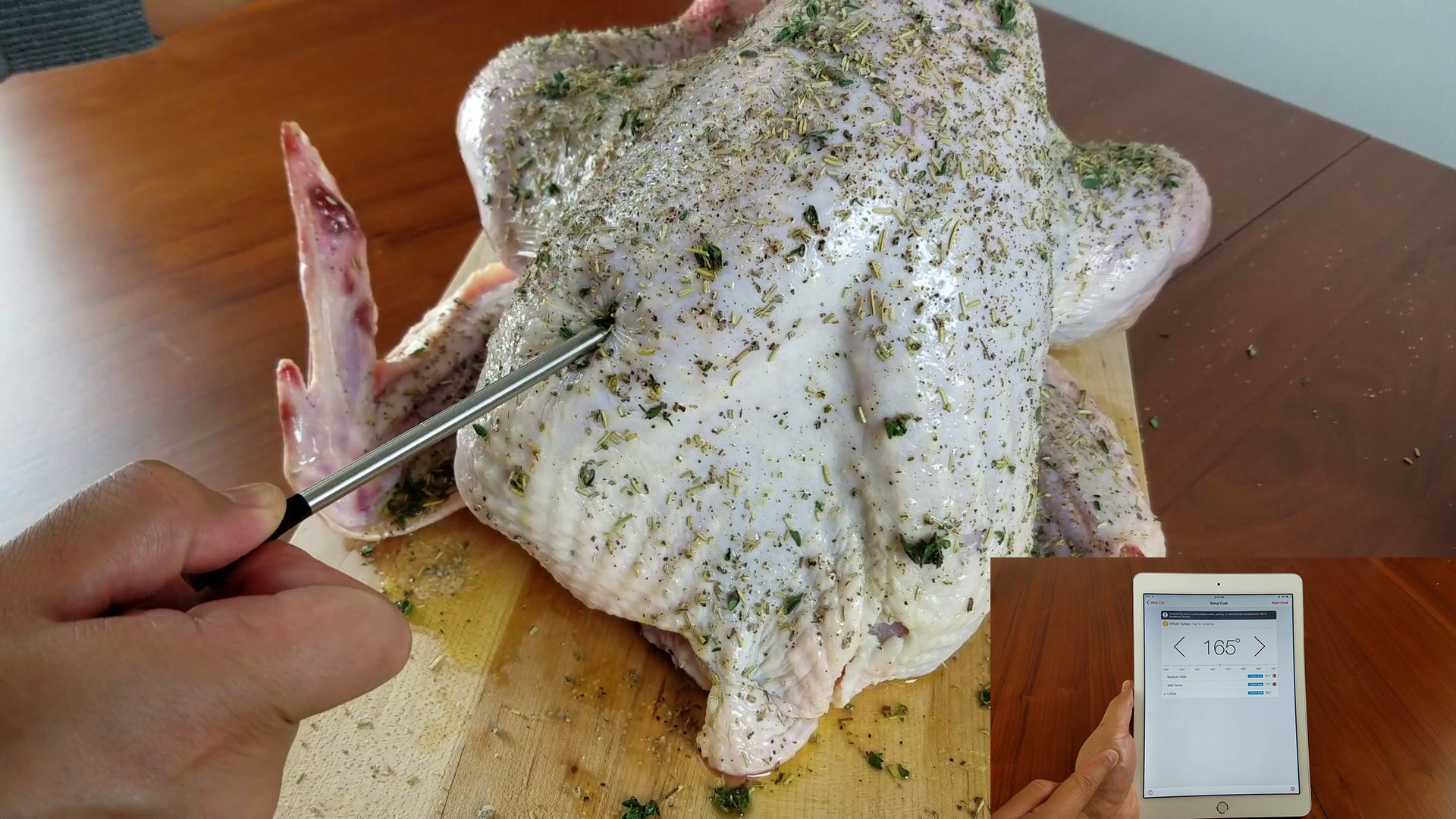
3. Start a guided cook in the MEATER app, then select: Poultry -> Whole Turkey -> 165°F. Once this is done, insert your probe into the center of the thickest part of the turkey’s breast. Tip: When you set up the cook, you can name the MEATER probe “Breast”.
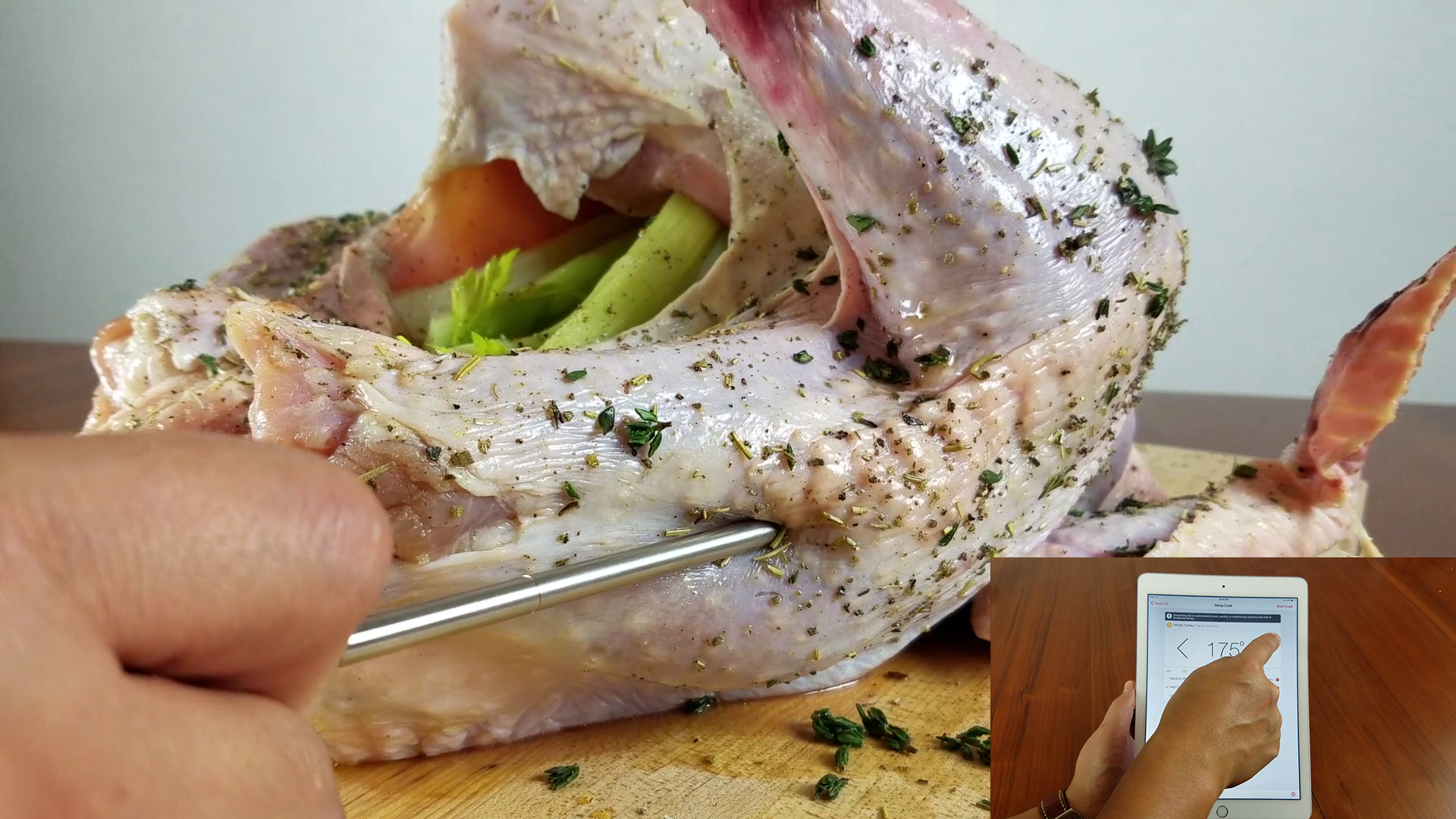
4. (OPTIONAL): If you’re using two MEATERs, set up a second guided cook, and select Poultry -> Whole Turkey -> 175°F. After the cook is set up, insert your second probe into the thickest part of the bird’s thigh. Tip: When you set up the cook, you can name the MEATER probe “Thigh”.
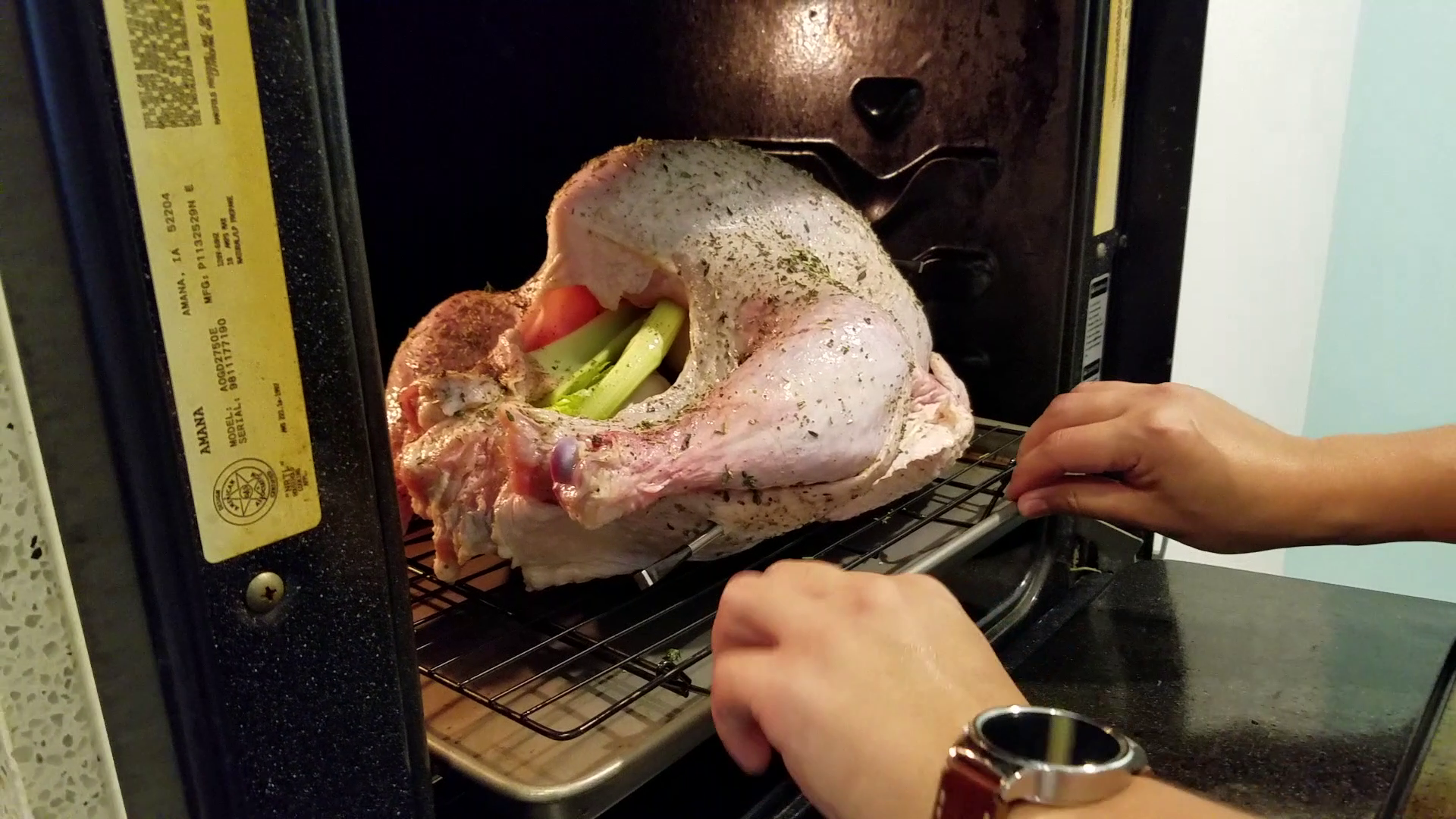
5. Set your turkey on a cooking rack, with a pan placed directly beneath it to catch any drippings. Start your cook, then place your turkey on the lowest rack in the oven. Tip: You can set your oven to a higher temperature than 325°F to finish faster, but for our cook, it finished at 2 hours and 15 minutes with perfect results: crispy skin and juicy meat. If you have time, cook low and slow @ 225°F for the juiciest results. Make sure to blast the bird with high heat at the end to crisp the skin.

6. When the app alerts you that your cook has finished, remove your bird from the oven and let it rest on a cool rack (different from the rack it was cooked on) .
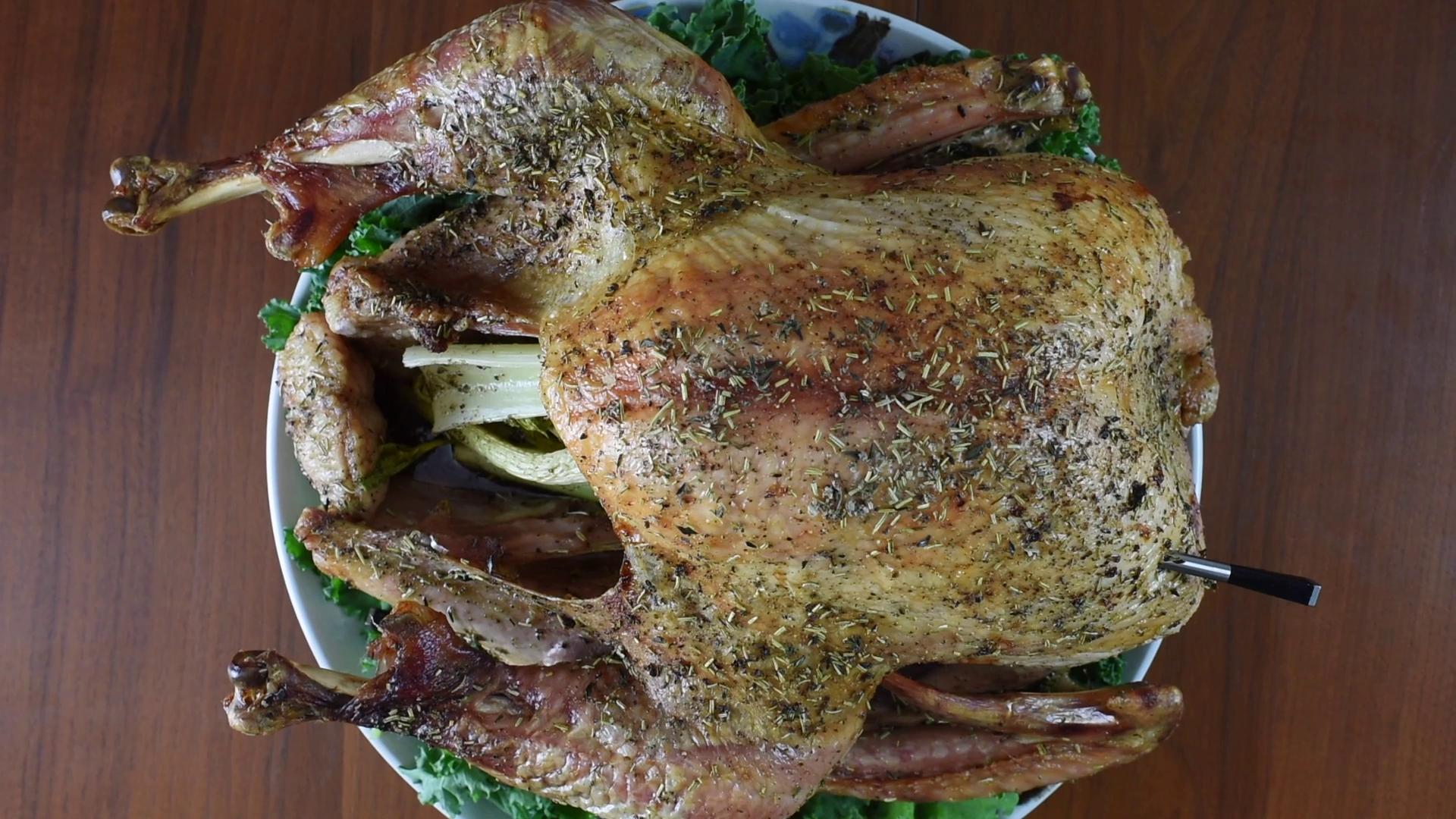
7. When your turkey finishes resting, it’s time to carve and enjoy!
Tip: Ideally, if you are using 2 MEATERs to monitor your turkey and followed the instructions to cool/shield the breast, both probes should alert you at the same time. If not, our recommendation is to prioritize the alerts from the breast probe, as white mean is more likely to dry out.